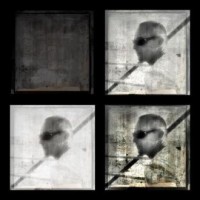SEARCH






|
|
|
|


by Editor Miro Susta
Kerala has long been renowned for its tranquil beauty. Even before the days of photography, most of travellers had an idea of what region around Cochin looked like from prints and paintings. Nevertheless, when first tourists visited spectacular places in Cochin (from 1956 Kerala) they wanted to capture them for themselves, to show their friends at home what they had seen.
I did the same, I visited Kerala three times, photographed it and created this photo article to introduce one of the smallest but one of the most beautiful states in India to my friends and all readers.
I have captured all photos, except two, with Nikon D7000 & D600 cameras and Nikkor 18-83mm, 50mm, 80-400mm and Sigma 10-20mm lenses.
Unfortunately 1x photo gallery is rather poor on photographs from Kerala, but I discovered two beautiful photos posted by Lou Urlings and Enjo Mathew and have added them to my photos in the chapter “People of Kerala”. Many thanks to both authors.
Kerala means “land of coconuts” in the local Malayalam language, but it is famed as “God's Own Country” and selected by National Geographic traveller, as “one of the ten must see destinations of the world”, is an enchantingly beautiful land. Its unique geographical position in the South-west corner of Indian peninsula and peculiar physical features have invested Kerala with a distinct individuality.
Green and gold are the defining colours of Kerala; green for the tropical lushness and gold for the prosperity. Gold in Kerala? This is a very special subject. Buying and wearing gold has been part of a culture and tradition in Kerala, Malayali’s (or if you like Keralite) are buying up gold like mad.Gold is a shared passion in Kerala. Almost every family has a hoard of the yellow metal, the size of which may reveal its economic standing.
Gold in Kerala is a love affair that, as all love affairs, defies logic: the pricier the object of love the greater the passion.
Gold had been mined in Kerala as well as panned from Kerala’s rivers for thousands of years and the gold and other valuables are believed to have been accumulated in the temples since then.
Shall the country fame be changed to “Gold’s Own Country”?
Kerala is divided in to three major geographical regions, the Highlands, the Midlands and the Lowland.
Kerala’s Highlands begin roughly 50 km inland where the paddy fields blister up into ridges with rubber plantation and thick forests peaking between 80 and 100 km from the coast. Beside of lush nature Kerala Highlands is home of major plantations like tea, coffee, cardamom and other spices as well as wildlife sanctuaries.
The Midlands, lying between Highlands and the Lowlands, is made up of undulating hills and valleys. This is an area of intensive cultivation. Cashew, rubber, coconut, areca nut, cassava, banana, rice, ginger, turmeric, curry leaf, chillis, cinnamon, coriander, cloves, pepper, sugar cane, and vegetables of different varieties are grown here.
The Lowland or the coastal area, which is made up of the river deltas, backwaters, and the shore of the Arabian Sea, is essentially a land of coconut and rice. Fisheries and Coir industry constitute the major industries of this area.
It is interesting to know that Kerala has got around 44 major rivers.
The Backwaters form an especially attractive and economically valuable features of Kerala, that why Kerala is also called Land of Rivers and Backwaters.
Chinese Fishing Nets
Cantilevered Chinese Fishing Nets in Fort Kochi hang like giant predators along a waterfront dotted with Portuguese Palacios, Dutch Merchants’ Missions, British Warehouses and Jewish Synagogues.
They are in use for the last 500 years.
‘Cheena Vala’ in local parlance, the huge cantilevered fishing nets are believed to have been brought by Portuguese from Macau, once a Portuguese colony.
While some accounts mention that the nets were set up between AD 1350 and 1450 by traders from the Mongolian court of Kubla Khan, some others say Chinese explorer Zhang He introduced the nets to Kochi shores.
Set up on bamboo and teak poles, the nets are fixed land installations for an unusual form of fishing — shore operated lift nets. Suspended horizontally over the sea, the nets give the appearance of a huge hammock. Each structure is at least 10m high and comprises a cantilever with an outstretched net suspended over the sea and large stones suspended from ropes as counter weighing at the other end. Each net is operated by 5-6 fishermen.
The fish catches can be purchased individually on the spot and need to be taken only a short distance to nearby restaurants where will be cooked it for the buyer.
Witness of the Past
Old houses in forgotten parts of Fort Kochi are not disturbed by crowds of tourists, and the owners are most probably not participating in profit-taking from the tourist’s related activities in other busy parts of this historical town.
But it is interesting to visit forgotten old Fort Kochi places to see the real historical remaining’s. These are places where foreign or local tourists can be seldom seen, but places which have its own special history.
The Fort Kochi is a place with deep historical roots, its streets exude an old-world charm; it is a place with beautiful monuments and a variety of linguistic and ethnic communities including Malayali, Konkani’s, Kannada, Tamil, Guajarati’s and so on but also town streets with old houses which are just waiting for renovation funds.
During the golden trading period Fort Kochi was known as the Queen of the Arabian Sea harboured ships from Asian and European countries visiting her port.
Rain-tree from Bolgatty Island in Kochi
Rain-tree, very common in South- and Southeast-Asia, is a wide-canopied tree with a large symmetrical crown. It usually reaches a height of 25 m or more and a diameter of 40 m or larger. The leaves fold in rainy weather and in the evening, hence the name "rain tree" and "five o'clock tree".
Large branches of the tree tend to break off, particularly during rainstorms. This can be hazardous as the tree is very commonly used for avenue plantation.
Bologatta Palace
Bolgatty Palace was built in 1744 by Dutch traders. It is one of the oldest existing Dutch palaces outside Holland. The palace was later extended and beautiful gardens were landscaped around it.
Cochin Carnival
If there is a festival that all of Fort Kochi and Ernakulam / Kochi impatiently expects every year, then it is the Cochin Carnival that takes place in the last week of December and first day of January.
During this time, Fort Kochi is adorned like a bride, and tourists, not only from the countryside but also from outside, flock to this beautiful town to attend the celebration.
The beginnings of the Cochin Carnival date back to the celebration of the Portuguese New Year during the colonial time.
Cochin Carnival is the time of merry making and the entire place gets filled with colours and the joyous laughter of the people. The Cochin Carnival brings along a mood of joyous togetherness and the carnival seems to be the best way to end the end the old year and start the New Year.
Street Fruit Shop
Street fruit shops are very popular not only in Kerala but also in the whole country. The one on the photo is from ferry point in Kerala’s city of Ernakulam.
To buy fruit here is really not very expensive, it is usually fresh and of very good quality, however it must be washed before eating.
Ernakulam is called the commercial capital of the state of Kerala, it was once the capital of the Kingdom of Cochi. It belongs to the eastern mainland part of the twin cities, Ernakulam and Kochi. Auto (tuk-tuk) taxi is the cheapest transport way between both cities.
Both cities are situated around 220 km Northwest of the state capital city of Thiruvananthapuram (Trivandrum).
The Kochi Port, Cochin Shipyard and the Tourism have heavily contributed to the faster growth of the city and its economy.
Athirappilly Waterfalls
Athirappilly Waterfalls, the Niagara of India, are situated at an altitude of 300 m above sea level on the Chalakudy River at the entrance to the Sholayar Ranges of the Western Ghats, around 70 km north-east of Kochi city.
Athirappalli is a scenic combination of forests and little streams. Falling from a height of 25m, this is one of the largest waterfalls in the Kerala state.
Many endangered and endemic species of flora and fauna are found in the forests of the Athirapilly-Vazhachal area. This area is the only place in the Western Ghats where four endangered Hornbill (the State bird of Kerala) species are seen. It is also home of Bonnet Macaque Monkeys.
The International Bird Association has declared Athirappalli an "Important Bird Area" and the Asian Nature Conservation Foundation has recommended that the area should be declared a sanctuary or a national park. The scenic beauty of Athirappilly Waterfalls has always been attractive to film-makers.
Bonnet Macaque Monkey
The Bonnet Macaque Monkey is being unique to southern India. Its distribution is limited by the Indian Ocean on three sides and the Godavari and Tapti Rivers along with a related competing species of Rhesus Macaque in the north.
The Bonnet Macaque feeds on fruits, nuts, seeds, flowers, invertebrates and cereals. In southern India, this macaque exists in close relationship to humans, feeding on food given by humans and raiding crops and houses.
Villages on Hill Slopes
There are few colourful villages surrounded by green tea and coffee plantations located on the Munnar Hill slopes. Munnar Hills - breathtakingly beautiful - a haven of peace and tranquillity - the idyllic tourist destination in Kerala.
Situated at the confluence of three mountain streams - Muthirapuzha, Nallathanni and Kundala, and perched about 1,600 m above sea level in Idukki District, Munnar Hills were the favoured summer resort of the erstwhile British administration in south India.
Nowadays it is also an ideal destination for trekking and mountain biking.
Wild Elephants
Kerala has a plethora of wildlife sanctuaries and is one of the best places in India to do some elephant spotting.
Elephants living in Kerala, the Indian Elephants, are one of three recognized subspecies of the Asian Elephant. However, along with a large population of wild elephants, Kerala has more than seven hundred elephants in captivity. Most of them are owned by temples and individuals.
They are used for religious ceremonies in and around the temples, and a few elephants work at timber yards. As the State Animal, the elephant is featured on the emblem of the Government of Kerala State.
Kerala Backwaters
One of the most tranquil and relaxing things people can do in Kerala is hire a Kerala houseboat (called kettuvallam) to explore the backwaters and canals, enjoying magnificent scenery all along the waterways and stopping to admire the life and housings in many villages along the way.
The lush green palm-fringed landscape, diverse wildlife, people and houses that line the backwaters make a journey along these waterways seem like a journey through another world.
Today’s houseboats are huge, slow moving exotic barges used for leisure trips, and are in fact reworked version of kettuvallams of older times. The original kettuvallams were used to carry tons of rice and spices.
The kettuvallam is held together with coir knots. Not even a single nail is used during the construction of the boat. The boat is made of planks of jack-wood joined together with coir. This is then coated with a caustic black resin made from boiled cashew kernels. With careful maintenance, a kettuvallam can last for generations.
A portion of the kettuvallam is covered with bamboo and coir to serve as a restroom and kitchen for the crew. Meals would be cooked on-board and supplemented with freshly cooked fish from the backwaters.
Leaving for the Catch
The main income source for living in Kerala is fishing and the fishermen communities spread along the beautiful beaches of Kerala.
With less fishes in the waters the life become more difficult for local fishermen and their families, but their positive spirit let them survive with happiness. Many large fishing boat are leaving from Kochi Port, major port on the Arabian Sea – Indian Ocean, for open sea fishing every day.
Kerala People
The people of Kerala are known to be the simplest and extremely down to earth, who lead a simple lifestyle.
Known as 'Keralite', the natives of Kerala like to stay close to their ancient traditions, rituals, practices and religion.
It is no exaggeration if one says that they are extremely proud of their rich cultural heritage and these values have been preserved from generations.
Keralite have a lifestyle that is not at all complicated and therefore, they are content and happy owing to their unfussy pleasures of life.
Kerala is a state with very high literacy, higher health care and lower mortality ratio. In Kerala you experience freshness and touch of mother earth everywhere.
Some useful Tips for Kerala Travelers.
Tip No. 1: The best time to visit Kerala is between late-November and February, when the skies are clear and humidity at its least debilitating. From March onwards, the heat and stickiness become increasingly uncomfortable in the pre-monsoon build up.
Tip No. 2: It is usual for tourists in Kerala to be driven instead to drive themselves. Many car rental firms operate on the basis of supplying chauffeur-driven cars. Avis and Hertz are the best for self-drive car rental.
Tip No. 3: Driving in Kerala may be dangerous. Expect the unexpected. Accident rates are very high. You must have an international licence and good insurance.
Tip No. 4: Try to visit all places of interest during normal, less crowded, working days. Avoid weekends and school holiday times.
Tip No. 5: If you are using tripod be aware of the fact that tripod is not allowed to use in some areas like museum rooms and similar.
Tip No. 6: In the South eating with fingers is de rigour, and cutlery may not always be available. Wherever you eat, remember to use only your right hand, and wash your hands before you start to eat.
Tip No. 7: Most Hindu temples in Kerala are closed for non-Hindus, but when visiting those that are not you should dress conservatively and try not to be obtrusive.
Tip No. 8: Kissing and embracing are regarded in Kerala as part of sex, avoid them in the public.
Tip No. 9: Remove your shoes when entering private house.
Tip No.10: Beware of pointing your camera at anything that may be considered “strategic”, including airports, anything military and even bridges, railways, railway stations and main roads.
Tip No.11: Remember that some people prefer not to be photographed, so it is wise to ask before you take a photo of them. However, on the other side you will find many people in Kerala volunteering to pose for photo.
Tip No.12: Kerala is famous for wide variety of traditional cuisines that are exclusive to the place. But you must try Kerala Biriyani rice dish. It has a unique taste due to the difference in ingredients used and preparation style. In Kerala, different types of biriyanis are prepared in different areas and among them the most famous is Thalassery Biriyani. What makes this biriyani special is that it uses green chilli and garam masala and completely avoid red chilli powder, coriander powder and other spices. And do not forget superb choice of tasteful fish dishes and garlic or plain chapati (roti).
Tip No.13 Kerala is famous to coconut water, lassi (butter milk), lime juice and of course, tea and coffee. If you like special alcoholic drink, try toddy, made from both coconut palms and toddy palms. Despite its alcoholic effect, toddy is considered as a good drink as it is less harmful compared to other alcoholic drinks.
Tip No.14: Must try Kerala’s delicious Jackfruit, local Mangos, Papaya, Guava and of course the excellent small bananas.
Tip No.15: Be choosy in hotel selection. Cheap is not always cheap. The low cost hotel are usually not very clean. Three star and higher are usually acceptable for westerners. Drink only bottled water and if possible drinks without ice.
“We live in a wonderful world that is full of beauty, charm, and adventure.
There is no end to the adventures we can have if only we seek them with our eyes open.”
~Jawaharlal Nehru~ (First Prime Minister of India)
Memories of Kerala
My Kerala journey was spectacular and exciting trip through country’s green landscape, relaxing cruise in ravishing backwaters, exhausting hiking through green tea plantations and around great waterfalls, meeting nice people and capturing photos for remembrance.
It made me a little bit sad to leave Kerala, but on the other side the wonderful memories of Kerala remain forever and I hope to be back to this lovely “God’s Own Country” soon.
I hope that you have enjoyed this article with all the photos.
Many thanks for visiting and companionship.
 | Write |
 | Peter Walmsley I have enjoyed your article here Miro and note your tips. I'm planning on visiting Kerala sometime next year. Many thanks for sharing it! |
 | Paulo Abrantes PRO amazing article. congrats, Miro, and thanks for the sharing |
 | Miro Susta CREW Thank you Paulo. |
 | Yvette Depaepe CREW Thanks for taking us with you on your journey to Kerala and to let us discover this wonderful place, Miro! Beautiful photos and interesting information. Makes me longing to jump on a plane right away ;-) Cheers, Yvette |
 | Miro Susta CREW You most welcome Yvette. Many thanks for nice words. |